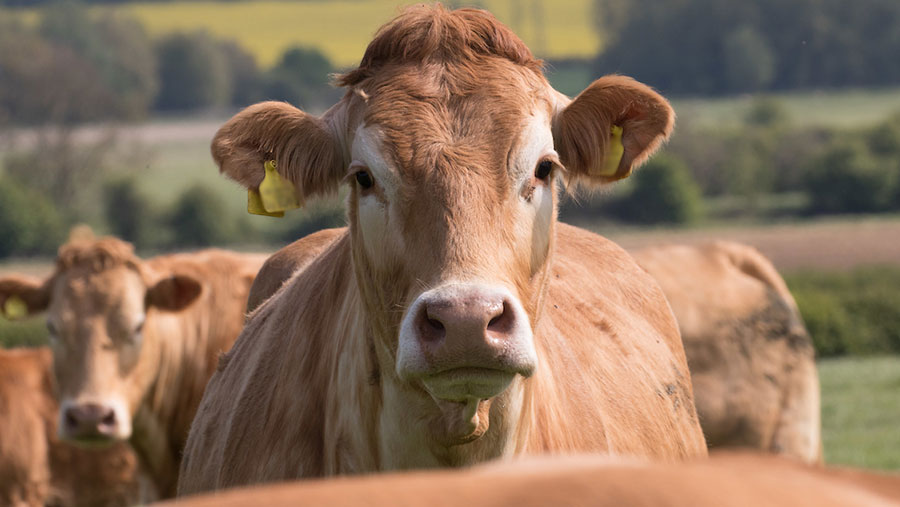Q&A: How to apply for BVD-free herd status
 © Tim Scrivener
© Tim Scrivener
Cattle herds which have tested negative for BVD for two years will qualify for BVDFree Test Negative Herd Status.
The scheme, which launched on 28 March 2018, is available to farmers who are registered with BVDFree England and have recorded two years of negative BVD testing under the scheme.
See also: Welsh farmers respond positively to BVD eradication scheme
As part of industry engagement with BVD eradication, vets must have completed the British Cattle Veterinary Association (BCVA) BVD training to complete the declaration.
Farmers Weekly spoke to vet Fiona MacGillivray from AHDB to find out more.
What is BVD-free?
The voluntary BVD eradication scheme was launched in 2016 and since then has provided access to individual animal BVD status via its unique national database, allowing for reassurance that BVD is not being brought onto a farm when purchasing cattle.
Registered herds are also searchable through the database. There are two options:
- BVDFree Registered Herd Status. This shows only that the herd has been registered and that the farmer has accepted the terms of registration (to test for the presence of BVD and remove PIs if and when identified).
- HeCS accredited: BVD free.
How do I know if I qualify for this status?
All calves born within the herd during the last two years must have been tested for BVD virus with entirely negative results.
Or alternatively, check (antibody) testing of each separately managed group of youngstock, aged nine to 18 months. This must be completed each year with no seroconversion detected (results are antibody negative).
Do specific laboratories have to be involved in testing?
Only those labs listed on the BVDFree website are able to test and upload results onto the national database.
The labs will only upload results if they have received samples with an accompanying BVDFree submission form – these can be downloaded from the website.
What happens if I’ve been testing for some time but only recently joined the scheme?
Historic results can be uploaded onto the database so you are able to search for animals that have already been tested.
Results of samples taken before 1 January 2017 can be uploaded free of charge. This is also the case for samples taken between 1 January and 31 March 2018.
Contact your lab to arrange to have historic results uploaded.
What do I have to do to apply for BVDFree Test Negative Herd Status?
An application form can be downloaded from the BVDFree website. It will need to be completed by the registered farm owner and their vet.
The applicant also needs to make sure the test results for the previous two years are uploaded onto the database – this can be organised through their lab.
I have been awarded a BVD Free Test Negative Status. What are the next steps?
A BVDFree Test Negative Herd Status is good news; however, it provides only a ‘snapshot’ and the risks remain of breaking down with BVD unless biosecurity is also considered.
In order to retain this status, it is necessary to continue to monitor your herd, through annual check tests or testing all new-born calves for the BVD virus.
To reach the highest health status, BVDFree encourages all herds that have achieved the Test Negative Herd Status to consider joining a CHeCS accredited health scheme.
This takes a robust approach to biosecurity on farm to prevent future infection with BVD.
CHeCS BVD accreditation is recognised by BVDFree as the highest herd status available, indicating that potential customers can buy with a higher level of confidence.
Can a herd status be changed?
Yes – a veterinary surgeon and a laboratory can make the case to BVDFree to support a request to change a herd status for a client from Registered to Test Negative, subject to certain conditions.
- Check the BVDFree database to ensure you have an accurate and up-to-date status.
- If you need help in obtaining a herd status, please consult your vet or laboratory, or the BVDFree helpdesk.
- If you have a PI in your herd, you will automatically receive a ‘BVDFree Registered’ herd status. Your herd status must be updated annually.
Other requirements of application:
The testing approach for that farm needs to be confirmed – was virus testing or check (antibody) testing used.
The applicant must confirm whether any PIs were found and, if so, the date the last PI was removed and the method of removal (culled or sold).
The keeper must declare their intention to abide by the terms and conditions of BVDFree.
This means either:
- All animals brought onto the farm in the last 12 months (including hire bulls) have come from herds with a status at least equivalent to BVDFree Test Negative
- Or animals brought on to the farm have an individual BVD virus test negative animal status.
Their vet must declare the herd has been tested in accordance with BVDFree test guidelines or that they have seen results from a BVDFree designated lab.
They must also have completed the BCVA accredited training.
With regards to biosecurity, the application includes several questions that can be used to help consider the current BVD disease risk on farm.
This information is not used to assign BVDFree herd status but should be valuable to help prevent future BVD infection being introduced.
